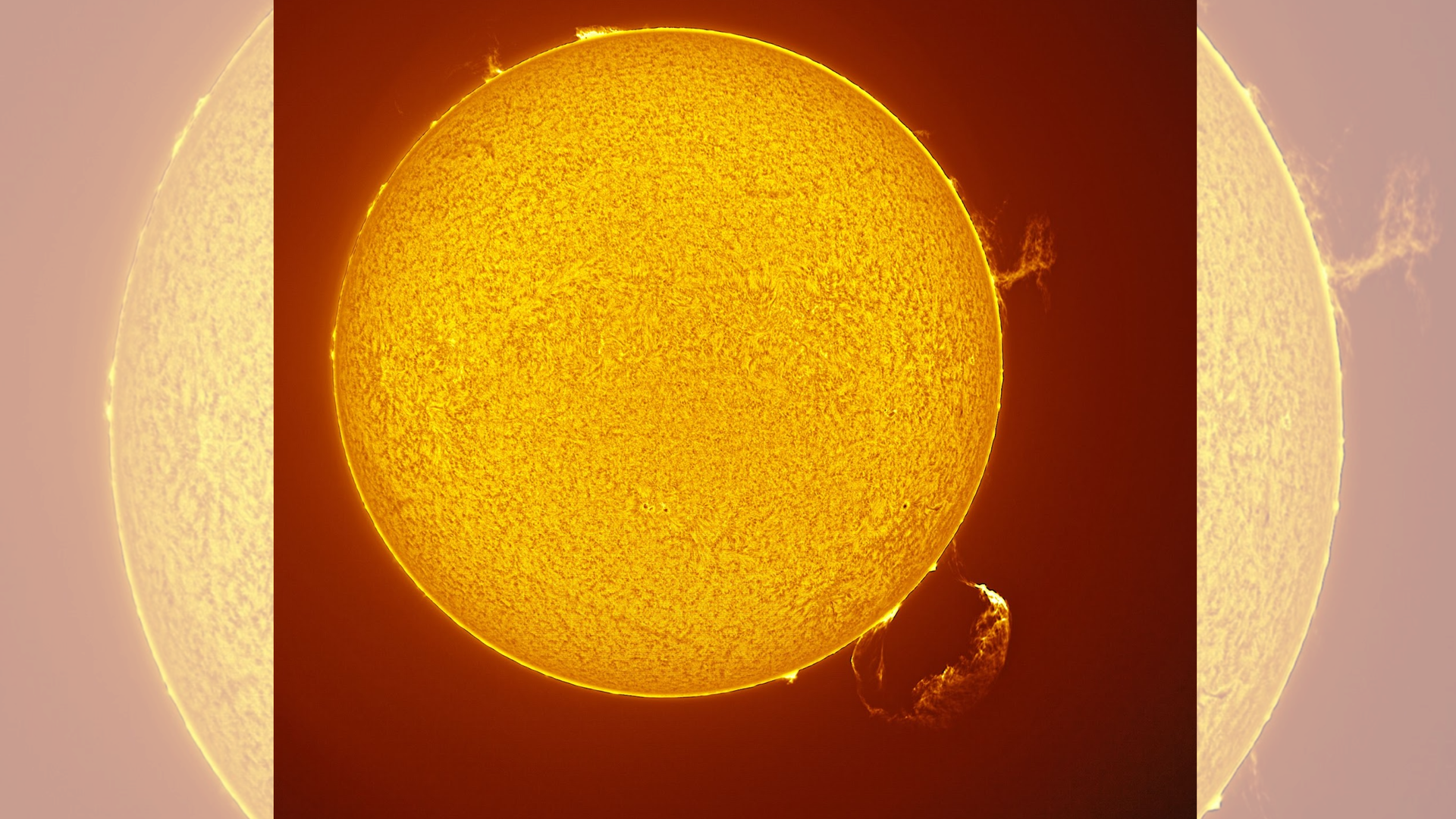Follow us on Google News (click on ☆)
Maximilian Teodorescu, from the Institute of Space Science in Romania, captured this rare image on Wednesday, August 20. He uses a network of solar telescopes to observe magnetic activity. His wife Eliza helped him adjust the equipment for this precise observation.

A solar flare and a plasma vortex captured together.
Credit: Maximilian Teodorescu
Two major events appear simultaneously in this single photograph. These events result from disturbances in the Sun's magnetic field.
The solar vortex on the right side of the image measures approximately 130,000 kilometers (80,778 miles) in height. This is equivalent to more than ten Earths stacked together. Its size exceeds the usual average for such structures.
The plasma eruption at the bottom right of the image extended nearly 200,000 kilometers (124,274 miles) wide. It released a coronal mass ejection into space. Fortunately, this solar storm is not heading toward our planet.
The Sun is currently going through its maximum activity in its 11-year cycle. This period favors the appearance of such phenomena. Amateurs can observe them with a telescope equipped with a proper solar filter.
What is solar plasma?
Plasma is a state of matter where gases are ionized, forming a mixture of charged particles. On the Sun, it is maintained by intense magnetic fields and can reach extreme temperatures. This state allows for electrical conduction and reacts strongly to magnetic forces. It constitutes most of the visible matter in the Universe, particularly in stars.
Phenomena like vortices and eruptions are manifestations of this moving plasma. Understanding its behavior helps predict solar activity and its effects on Earth.
The Sun's magnetic field is generated by movements of conductive plasma in its interior. It extends far into space and influences the entire heliosphere. This field can become unstable, leading to magnetic reconnections that release energy. These events cause flares and coronal mass ejections.